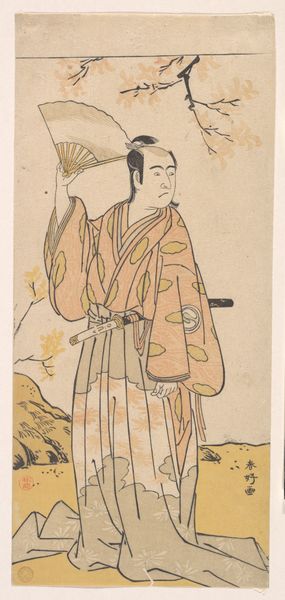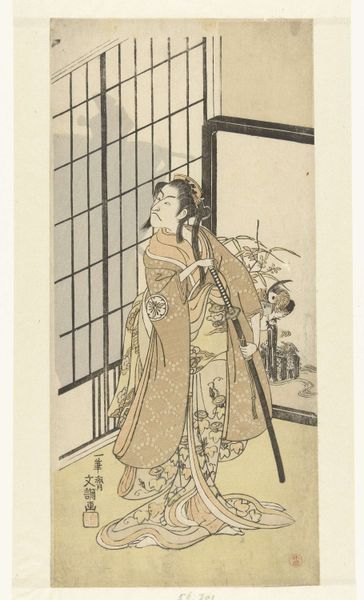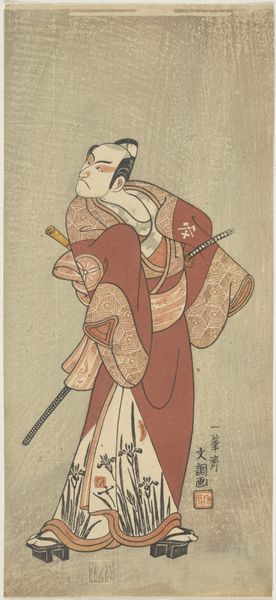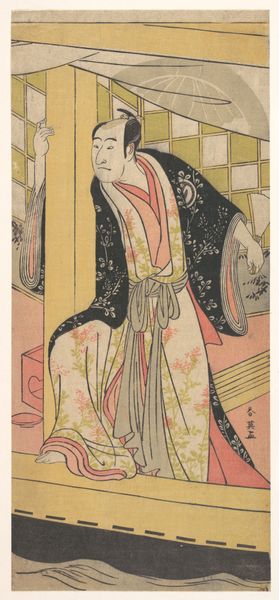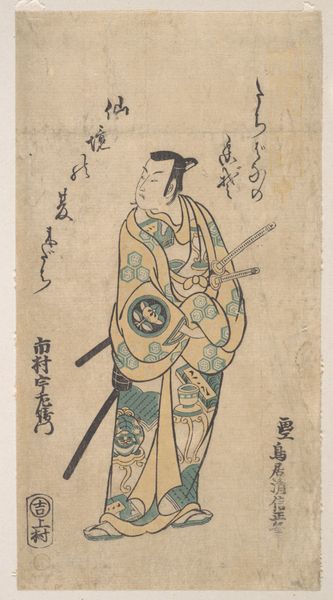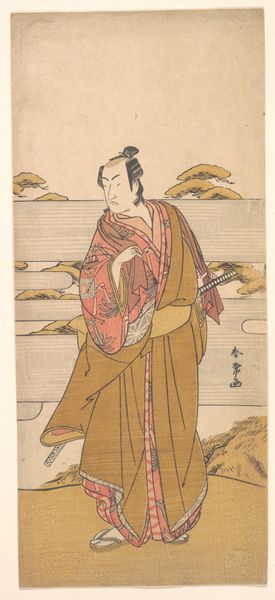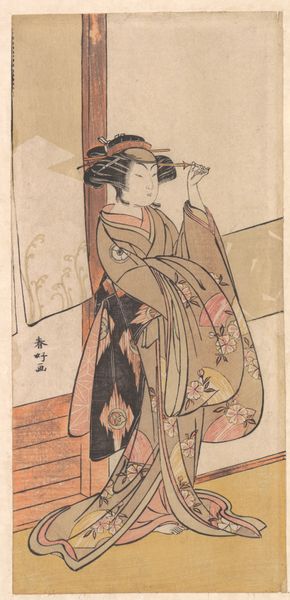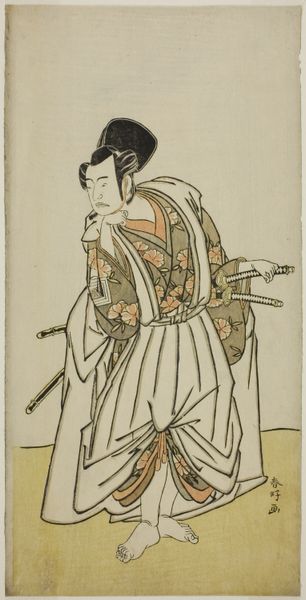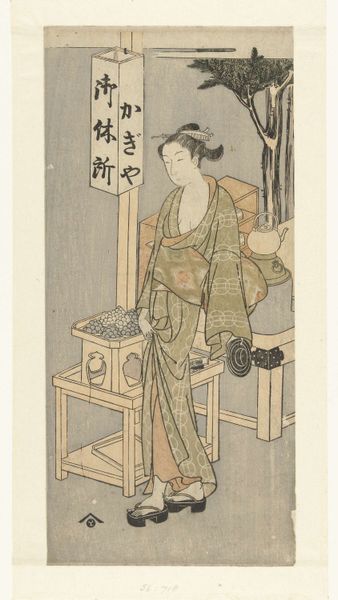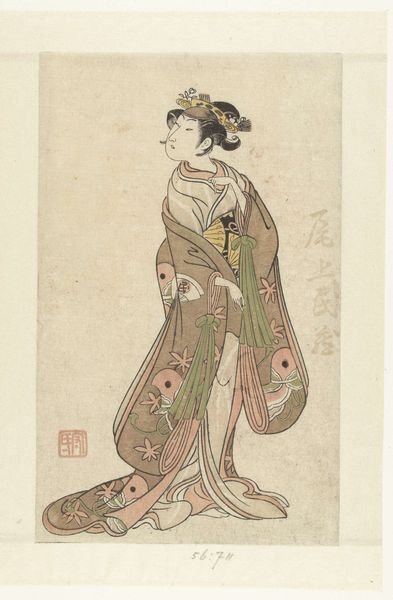
print, woodblock-print
#
portrait
# print
#
asian-art
#
ukiyo-e
#
figuration
#
woodblock-print
#
genre-painting
Dimensions: height 300 mm, width 142 mm
Copyright: Rijks Museum: Open Domain
Curator: This woodblock print by Ippitsusai Bunchō, dating from 1768 to 1772, presents the actor Ichikawa Yaozo II poised with a drawn sword. My immediate impression? He seems caught between bravado and hesitancy, wouldn’t you say? Editor: Yes, precisely. The slightly downturned gaze and tension in his shoulders tell a different story than the sword might suggest. It makes you question what sort of role, or even reality, he is performing in. What significance can we attribute to the Kabuki actor depicted here? Curator: Kabuki, and particularly its actors, served as vessels for transmitting cultural narratives and embodying virtues, but also critiquing the social order. Notice the elegant rendering of the robes. The layering of fabrics is beautifully captured in print. Consider what it signified to represent the warrior class. Editor: Given that this was the Edo period, during the height of strict sumptuary laws, I would assume the image functioned almost as a subversive desire, particularly among merchants and artisans, whose societal contributions didn’t mirror their potential for individual expression. Curator: Indeed. And while seemingly a genre scene, it touches on the tensions within Japanese society, hinting at aspirations and constraints. Look at the sword, how it points toward the edge. Its symbolism might address that conflict explicitly. Editor: And the actor’s slightly disheveled appearance, the loosened robes—it destabilizes the stoic, idealized image of the samurai. How fascinating that through the controlled artifice of Kabuki and woodblock printing, these subtle critiques could be circulated and consumed. Do you see the patterns, too? I wonder about that, about the symbolism associated to certain Kabuki roles. Curator: The visual vocabulary itself would've had inherent meaning. The patterns on the clothing, and even the actor's posture all combine. What does that specific motif reference from the world of Kabuki at this moment? These details amplify our understanding of both the artistry and socio-political commentary woven into the fabric of ukiyo-e prints. Editor: Examining the historical and performative contexts has certainly given me a richer understanding of its complex layers of meaning and artistry, a lens for cultural understanding of an iconic art form! Curator: And understanding how images carry symbolic and emotional weight through repetition over time really underscores their cultural power, the actor being representative of both real aspirations but artistic invention.
Comments
No comments
Be the first to comment and join the conversation on the ultimate creative platform.
